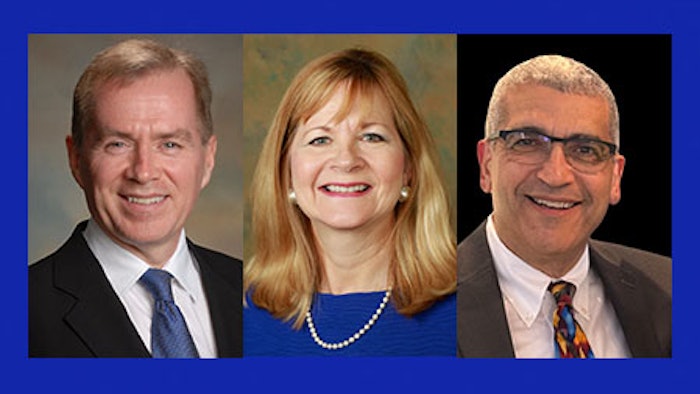Technology, teamwork could ease workforce challenges in anesthesiology
Collaboration is important in identifying and solving staffing shortages.

As the field of anesthesiology navigates the evolving landscape of health care, workforce supply and demand has become a paramount concern.
"Demand for care has increased due to several factors, including an aging population requiring more surgeries and procedures, a more severe population disease burden, and other chronic diseases, such as the obesity epidemic and diabetes," said Daniel Cole, MD, FASA, Professor of Clinical Anesthesiology at the University of California, Los Angeles. This increasing demand is juxtaposed with an eroding workforce supply, influenced by aging professionals, well-being concerns, changing expectations, and funding issues, he said.
"Anesthesiology professionals are being sought more frequently for nonoperating room cases. This really accounts for the supply/demand imbalance we currently experience nationwide," said Mary Dale Peterson, MD, MSHCA, FACHE, FASA, Chief Operating Officer and Executive Vice President of Driscoll Children’s Health System in Corpus Christi, Texas.
The rise in nonoperating room anesthesia (NORA) cases is driven by the increase in interventional procedures, the aging population, and the expertise of anesthesia professionals in providing safe and efficient care, she said.
The 2024 session, “Understanding and Addressing the Anesthesia Workforce Supply and Demand Imbalance,” aimed to shed light on these issues and explore innovative solutions. Moderated by Dr. Cole and James P. Rathmell, MD, MBA, Editor-in-Chief of Anesthesiology, this panel discussion was an informative event for anesthesiologists and anesthesia clinicians. Contributing to the discussion were Dr. Peterson, Amr Abouleish, MD, MBA, FASA, Professor and Vice Chair of Faculty Development at the University of Texas Medical Branch in Galveston; Oluwaseun Johnson-Akeju, MD, MMSc, Anesthetist‐in‐Chief, Massachusetts General Hospital; Maxime Cannesson, MD, PhD, Chair of Anesthesiology and Perioperative Medicine at the University of California, Los Angeles; and Thomas Miller, PhD, MBA, Director of Analytics and Research Services at ASA.
Evolution of workforce trends
According to Dr. Cole, the supply/demand imbalances in anesthesiology have evolved over the past few years, influenced by scheduling inefficiencies, changing workforce expectations that prioritize work-life balance, and an erosion of Medicare funding for anesthesia services.
Dr. Abouleish blames the imbalance on the explosive growth in demand versus the lower number of available anesthesia clinicians. "This demand is being led by an increase in NORA sites, driven by procedural technology advancements and the complexity of procedures and patients," he said. Additionally, the COVID-19 pandemic exacerbated workforce supply issues, with early retirements and workforce exits creating a shortage.
Dr. Abouleish said it isn’t really that supply is dwindling. In fact, supply is increasing but not as fast as the demand.
“The reality is we continue to train and graduate clinicians at higher rates each year,” but it just can’t keep up with demand, he said.
Workforce challenges
Payment and well-being have emerged as the two most significant challenges facing the specialty today. "Coping with the increased demand while maintaining a healthy workforce and preventing burnout is a major challenge," said Dr. Peterson. The disparity in Medicare payments, which are significantly lower than commercial payers, further complicates the financial viability of anesthesia services.
Innovative solutions
To address these workforce trends and challenges, several innovative solutions have been implemented. Dr. Cole described a sedation service where registered nurses provide moderate sedation for cases currently staffed by higher-level anesthesia professionals, offloading some of the workload. "In the future, technology such as AI and new anesthesia modalities of care will be employed," he added.
Dr. Peterson highlighted screening protocols in some departments to determine the appropriate level of anesthesia care needed for NORA patients.
"In children's hospitals, pediatric intensivists provide deep sedation for certain populations undergoing MRI," she said. Other solutions include making operating room/NORA schedules more efficient, preventing cancellations through preop clinics, and hiring additional personnel to assist in room turnover.
Dr. Abouleish stressed the importance of developing highly effective teams and leveraging technology to improve situational awareness and early intervention.
"The use of sedation teams and proper patient and procedure screening can reduce the need for anesthesia services in some cases," he said.
Collaborative efforts and the role of the Workforce Summit
Collaboration is important for identifying and solving workforce issues in anesthesiology.
"Collaboration with surgeons, proceduralists, nursing, administrators, and government agencies is the best path to implement new models of care and make maximum use of our workforce's skills," said Dr. Cole.
Dr. Peterson emphasized the importance of data presented at the ASA’s recent Workforce Summit, which shows a robust pipeline for anesthesiologists, nurse anesthetists, and certified anesthesiologist assistants. ASA launched the summit in 2023 to identify actionable strategies it can implement to ease the perceived imbalance (both short- and long-term) in the supply of and demand for anesthesia professionals.
"We must understand the impact of increasing NORA cases and work to mitigate this demand by appropriate triage and using other professionals in our anesthesia departments," she said.
